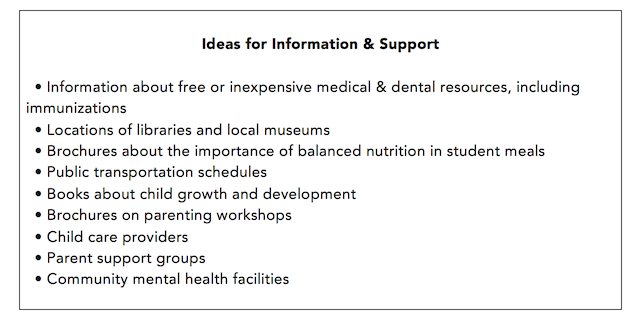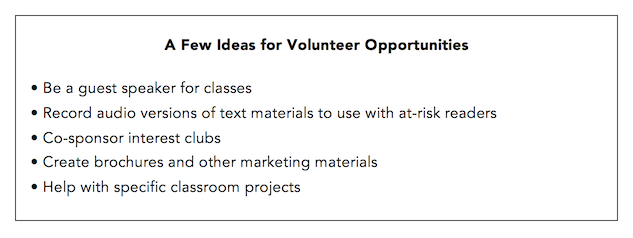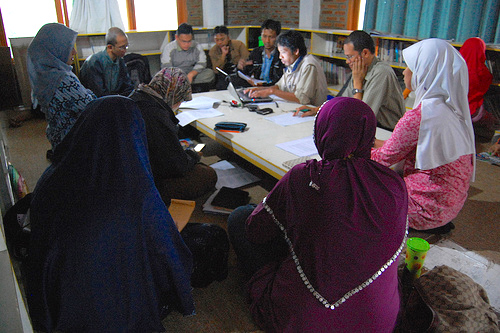School Leadership: How to Team with Families

If you’re a principal, you likely spend time working with parents and other family members of your students. Too often, much of that time is negative, coming after a major discipline problem or crisis.
On the positive side, another critical part of the principal’s job is leading a coordinated school-wide effort to interact with families in ways that support students, families, the school, and the larger community.
Every student in your building has a family and comes from a community, both of which influence the student. And teachers and administrators interact with families and the community every day—sometimes in direct ways, sometimes indirectly.
Even if you do not live in the same community as your students, every family in that community likely knows who you are as the principal of the school. Recently, during a visit to a high-poverty school, we noticed that the curriculum coordinator made several contacts with parents during a trip to the local grocery store. Hundreds of interactions like this take place during the school year.
Parent engagement is more than a monthly meeting at the school; it is the sum of all your interactions with parents and family members of your students.
Parent partnerships matter for learning
Intuitively, we know that involving parents and family members in a partnership has a positive impact on our students. When parents are involved both at home and at school, students do better and stay in school longer. When a parent and teacher work together to help a student in a specific subject area, such as reading, students typically improve in that area.

There are also benefits for teachers. Teachers who involve parents have a more positive attitude about families and stereotype them less. There is growing evidence that well-designed programs and practices that incorporate the school, family, and community benefit students, families, and schools.
Time is a common roadblock to coordinated parent/family involvement. But it’s not the only issue. There’s also lack of knowledge or training. Few teachers or administrators are fully prepared to work with families and communities as partners in their children’s education.
This can change. If you are willing to make the time to talk with the families in your school and listen to their needs, then you have taken the first step to building an effective partnership. Just as you balance the common needs of all your students with specific, individual attention, you will need to do the same with the families in your school.
The strategies that follow are applicable to all the families in your school, but you will need to customize specific activities within each strategy to best meet the needs of particular families or groups of families.
Check Assumptions and Stereotypes
Be careful about assumptions and stereotypes about families. Most teachers and school employees share a middle class background and view the role of parents through their own experience. Recognize that a diverse parent community reflects a variety of values, beliefs and knowledge about the role of parents and their relationship to school.
One persistent issue in schools is the comfort or discomfort parents feel as they interact with school personnel. Often Latino and poor families feel unwanted and unwelcome in their child’s school.
Do not organize your parent engagement program around majority, middle-class norms and values. Be cautious about relying on training, books and other resources that make generalizations about poor families or families of diverse cultures. A single approach to parent engagement will not succeed with all parents.
Build Trusting Personal Relationships
Personal relationships are important when working with families. Many parents are more comfortable interacting with school personnel in smaller settings where it may be possible to share information and ask questions.
Parents are often concerned about being dismissed due to language or cultural barriers. They are aware of the stereotypes present among school employees and other parents and may resist participating in parent activities where those stereotypes may be displayed.
Identify ways to meet and talk with families at churches or community centers off campus. Your outreach must be culturally sensitive and specific to each cultural group. Similarly, parents of limited means share these concerns and resist participating in programs where involvement is measured by the economic resources you can contribute to the school.
You are likely to have new students who enter your school after the start of the year. Create a welcome wagon to greet new families and help them with the transition to a new school. Enlist other families to deliver a “Welcome to Our School” packet of key information that includes a personal note from you and other school personnel.
Finally, parents value a personal connection with the teacher and others in the school who work with their son or daughter, so encourage communication from all school personnel. Promote the use of personal notes, e-mails, and phone calls to build a strong connection with families.
Value Robust Two-Way Communication

Too often school communication occurs just one way, school to family, and just about problems rather than successes. Parents, particularly parents of limited means, but also parents from diverse cultures, perceive that the school may not value their knowledge about their own child. They may resist sharing information that re-enforces assumptions they believe school employees hold about their family and their child.
Schools often create structures for parents to share information, but those systems are built on middle-class norms about when and how to interact with the school. Publish a family-friendly school newsletter on a regular, consistent basis. Be sure to share necessary information about the school, but also include topics of interest to parents.
Be sensitive to the diversity in your community. Do you need to publish a version in a different language? The same holds true for other procedures. Print signs in your building in the languages spoken by school families. Do you need to establish bilingual hotlines and help lines? If you have a large percentage of families who do not speak English as their native language, provide staff language training so that you and your teachers can communicate on a basic level with the family members.
It is also important to provide support and resources for the families of your students, although the specific types will vary depending on your specific population. Therefore, you must first understand your families and then match your resources to their needs.
One possibility is to create a family and community learning center. Find a physical space with adult-sized furnishings; then add basic refreshments and information helpful to parents.
As you create a library of materials they can access, don’t forget to have material that is written in appropriate language. You may need information written in a different language, such as Spanish, but you also may need to simplify the educational jargon in materials, realizing that your audience may not understand complicated terms.

Finally, publicize what you are offering. Use your school newsletter and also include information on your school’s social media accounts. Provide clear, inviting, noticeable directional signs. Keep some of the resource materials in the main office, with a note that more are available in the resource center.
You can build a terrific center for families, but if no one uses it, you have wasted your time. Make sure those who need it the most know it exists and feel welcome there.
Identify Authentic Opportunities to Learn From Families
Just as two-way communication is essential, so is creating opportunities for families of diverse backgrounds to share their knowledge and skills. Parents enjoy the opportunity to contribute their knowledge to the school’s program. Don’t rely on a parental engagement program based solely on fund-raising or other resource-based programs.
Many parents are eager for an opportunity to provide leadership. Seek opportunities for all parents to participate in decision-making groups. That may require working with community leaders to identify parents comfortable with that role.
As more parents participate in meaningful decision-making roles, you will find that the different perspectives can add depth to your discussions, and family members will appreciate that you value their input. If you are attempting to implement a change in your school, their support will also be critical.

Train Teachers and Other Staff
It’s important to work with teachers and other staff to become knowledgeable about the diversity present in your school community. The most effective learning occurs when members of these diverse communities are part of the training. Their involvement makes the training more authentic and signals the community that you are committed to learning about and respecting the diversity present in your school. As stated earlier, do not rely on a single book or training session to form generalizations about families from diverse cultures or socio-economic backgrounds. Those materials may only reinforce negative assumptions and stereotypes.
Develop and Implement a Plan
Improving parent engagement requires an intentional plan of action. Good intentions are noble but a systematic, sustained commitment requires planning and resource allocation. The best plans are developed with parents and community.
Current governance structures like the School Improvement Team or the PTO may not adequately reflect the diversity of point of view that’s central to a successful plan. Assure that your planning team is also diverse and involves each group that will be part of the plan.
Move Out Into the Community
Seek ways to move beyond the doors of your school and support the larger community. You might identify opportunities for students to participate in community service activities. Or, choose to celebrate the cultures of your community with specific school programs.
Collaborate with other agencies or groups in your area to create a framework for delivery of services, such as immunization clinics or dental and medical services. For example, an inner-city school in Jackson, Mississippi, partnered with local doctors to provide a free health screening day for all parents in the community. The only requirement was that they bring their school-age child with them. Parents received hundreds of dollars of services, the students participated in fun activities, and the bonds between the school, families and community were strengthened tremendously.
Connecting with families can be time-consuming, but it is a priority that is critical to the long-term success of your school. Remember, you, your staff and your parents and families all have the same priority: the well-being and learning of the students in your school.
Photos: Flickr Creative Commons
________

Barbara Blackburn is a best-selling author of 15 books including Rigor is Not a Four Letter Word. A nationally recognized expert in the areas of rigor and motivation, she collaborates with schools and districts for professional development. Barbara can be reached through her website or her blog. She’s on Twitter @BarbBlackburn. Her book, Motivating Struggling Learners: 10 Ways to Build Student Success, was published in July 2015.






































